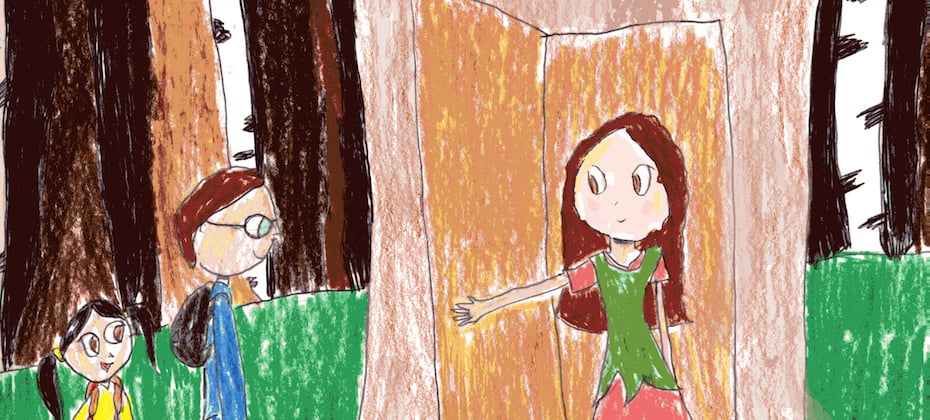Education and girls on the autism spectrum

A few years ago, trainees would often ask ‘what do we know about girls with autism?’ This led us to think about the research relating to autistic girls and to identify significant gaps in what we know about them and how they can gain the most from their educational experiences.
What do we know from the research?
Historically autism has been identified as more prevalent in boys (4 boys to 1 girl) and research into autism has focused mainly on boys. However, the assumption that many more boys than girls are autistic has been challenged in recent years (e.g. Kirkovski, Enticott & Fitzgerald, 2013) and possible reasons for the under-recognition of autistic girls suggested (Mandy et al. 2012).
Research is beginning to focus on how autism may present somewhat differently in girls and the implications of this for education settings. It is also very promising that good practice guidance is now freely available for schools (NASEN 2016) and the NAS has recently produced an online training module.
However, much of the academic research in this area is in its infancy, and to bridge the gap between research and practice we decided to write a book bringing together personal and professional insights. We used Bronfenbrenner’s eco-systemic theory (2005) as an organising framework for thinking about autistic girls and their education within their broader social context.
What do autistic girls and their families wish professionals knew?
In the book, a young autistic woman and a mother and her daughter provide fascinating insights into their experiences of education. They describe how girls may appear to cope well and ‘fly under the radar’ (NASEN, 2016) early on in their educational careers. However, as social and educational demands become more complex, strategies such as masking difficulties to fit in (Gould & Ashton-Smith, 2011) can break down, potentially leading to mental health or physical difficulties, missed school and incorrect or missed diagnoses.
Factors which enabled these young women to access education included
- skills or interests such as music and art
- supportive parents and school staff
- well informed professionals
- a tailored approach to secondary education and exams
- attending a supportive campus-based University.
What works in supporting autistic girls during their education?
Professionals working with autistic girls in mainstream and specialist settings across the age range provided insights and strategies based on their experiences. They considered some of the challenges specific to particular ages such as:
- how girls’ needs can be identified in the early years
- how transition can be managed
- how secondary schools can adapt existing good autism practice to support girls more effectively
- how insights from the only residential special school for autistic girls in the UK can inform good practice in other schools.
These authors highlight the importance of staff training to develop awareness of the needs of autistic girls, the importance of collaboration with parents, involving girls themselves in goal setting and plans, supporting mental health, staying safe, developing self-awareness and independence.
How can external professionals help?
External professionals can support autistic girls themselves and their families and girls’ inclusion within education. Insights from clinical psychology and psychiatry can enable us to understand and approach difficulties with mental health, eating, school refusal or self-harm in an autism-informed way.
In relation to communication, subtle difficulties in autistic girls’ communication skills may be missed making an individualised approach and access to strategies such as communication groups essential.
In the book we explore the role of educational psychologists, in particular with regard to helping school staff to understand and develop personalised and feasible strategies to support girls who are presenting with complex social and mental health needs.
Find out more about Judith and Caroline’s book ‘Education and Girls on the Autism Spectrum‘
References
Bronfenbrenner, U. (2005) Making Human Beings Human: Bioecological Perspectives on Human Development. London: Sage Publications.
Gould, J., & Ashton-Smith, J. (2011). Missed diagnosis or misdiagnosis? Girls and women on the autism spectrum. Good Autism Practice (GAP) 12, pp.34-41.
Kirkovski, M., Enticott, P.G. & Fitzgerald, P.B. (2013) A review of the role of female gender in autism spectrum disorders. Journal of Autism and Developmental Disorders, 43, 2584-2603.
Mandy, W., Chilvers, R., Clowdhury, U., Salter, G., Seigal, A. & Skuse, D. (2012) Sex differences in autism spectrum disorder: evidence from a large sample of children and adolescents. Journal of Autism and Developmental Disorders, 42(7), 1304-1313.
Morewood, G. D., Humphrey, N. and Symes, W. (2011) ‘Mainstreaming autism: Making it work’. Good Autism Practice, 12, 2, 62–68
NASEN (2016). Girls and Autism: Flying under the radar. Tamworth: NASEN.




